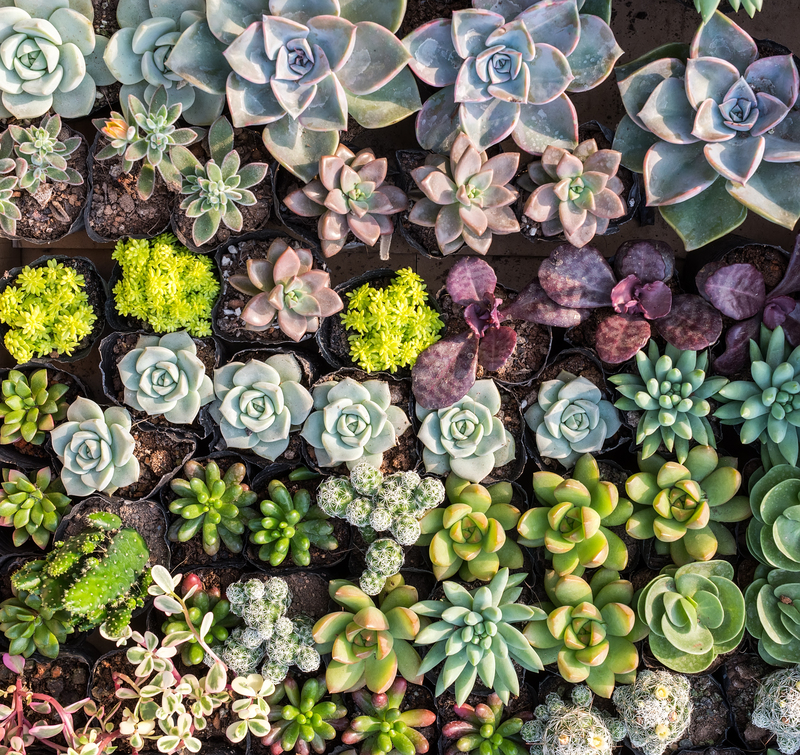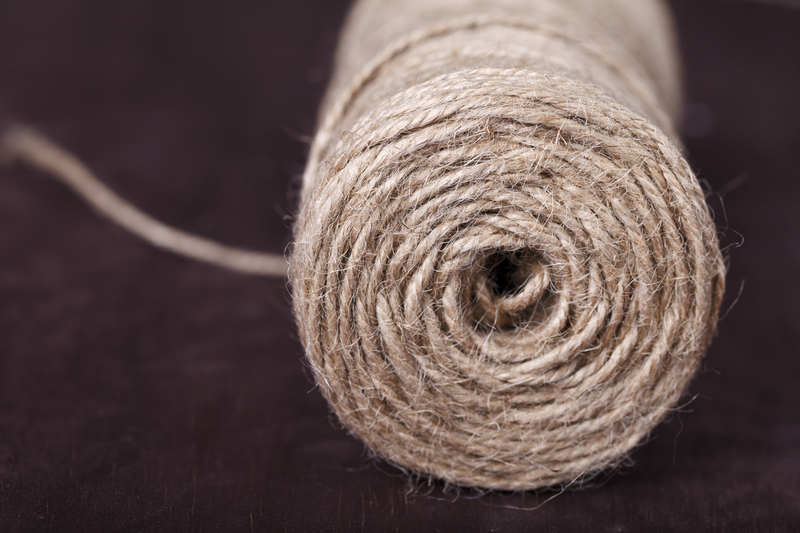Window Box Wonders: Vibrant Plants That Elevate Any Windowsill
Transforming your home's appearance can be as simple as adding a window box filled with stunning blooms and lush greenery. Whether you have a city apartment or a suburban home, the right selection of plants can turn an ordinary windowsill into a living work of art. In this comprehensive guide, discover the best vibrant plants for window boxes, handy tips for care and display, and creative ideas to elevate any window view.
Why Choose Window Boxes for Your Home?
Window box displays are an easy and effective way to add character, charm, and a burst of nature to both your home's interior and exterior. They make gardening attainable for even the smallest of spaces, offering the following benefits:
- Year-round color: Select the right varieties and enjoy foliage and flowers in every season.
- Convenience: Window boxes are easy to maintain and access for watering or rearranging plants.
- Curb appeal: Vibrant window box displays accentuate your architecture, making your home stand out.
- Space saving: Ideal for urban gardeners or homes with limited outdoor space.
- Wildlife friendly: Many window box wonders attract pollinators and birds.
The Role of Vibrant Plants in Window Box Design
The magic of a window box lies largely in the choice of plants. Vibrant, healthy, and well-arranged species can transform a simple box into a show-stopping feature. Using a mix of flowering plants, evergreens, cascading vines, and bold foliage ensures visual interest all year. Let's explore the best plants for eye-catching windowsill displays.

Top 10 Best Plants for Bright and Colorful Window Boxes
For truly spectacular window box arrangements, select a variety of plants with different textures, heights, and colors. Here are ten window box wonders that thrive and shine:
- Petunias (Petunia spp.) - Known for their abundant, trumpet-shaped flowers, petunias are a classic choice. Available in almost every color including magenta, pink, purple, and white, petunias bloom throughout summer when deadheaded regularly.
- Geraniums (Pelargonium spp.) - With their bold blooms and scented foliage, geraniums add striking color and structure. Their resilience makes them perfect for sunny spots.
- Bacopa (Sutera cordata) - This low trailing plant produces dainty white or blue flowers and is ideal for the front of a window box, softening the edges with a gentle cascade.
- Sweet Alyssum (Lobularia maritima) - Praised for its honey-scented blooms, sweet alyssum creates a cloud of white or purple at the window edge and helps attract friendly pollinators.
- Impatiens (Impatiens walleriana) - For shady windowsills, impatiens offer lush, continuous color in hues of red, orange, violet, or pink.
- Fuchsia (Fuchsia hybrida) - Known for their ornate, pendulous flowers, fuchsias are perfect in partially shaded boxes, adding exotic flair with their rich pinks and purples.
- Begonias (Begonia spp.) - Versatile and easy, begonias shine in both sun and shade. Their waxy leaves and bright blooms make them a reliable choice for terraced arrangements.
- Calibrachoa (Calibrachoa spp.) - Sometimes called "Million Bells," these mini-petunias erupt into masses of small, colorful flowers and create a tumbling, colorful effect.
- Ivy Geranium (Pelargonium peltatum) - With trailing stems and vivid blossoms, ivy-leafed geraniums provide lushness and vibrant color throughout the growing season.
- Herbs (Thyme, Basil, Rosemary) - Mixing edible with ornamental is a trend in modern window box gardening. Fragrant, easy-care herbs like basil and thyme add greenery, scent, and culinary value.
Creative Combinations: Designing Show-Stopping Window Boxes
Designing a window box that pops starts with the classic "thriller, filler, spiller" planting technique:
- Thriller: The tallest, most eye-catching plant. For a sun-drenched spot, try upright geraniums or ornamental grasses.
- Filler: Mid-height plants that fill out the box. Consider begonias, impatiens, or coleus for lush filler.
- Spiller: Trailing plants to soften edges and cascade down the side, such as bacopa, ivy, or sweet potato vine.
Dare to experiment with color and texture pairings. Combine cool hues like lavender and blue with punchy oranges or magentas, and pair leafy plants with more delicate blooms for continuous interest. Select plant varieties that thrive in similar light and water conditions for cohesive growth.
Window Box Plants for Every Season
-
Spring:
- Pansies and violas for early color
- Muscari and miniature daffodils for fragrance and whimsy
- Herbs like parsley and chives for a green start
-
Summer:
- Petunias, calibrachoa, and marigolds for vibrant hues
- Edible plants such as basil and cherry tomatoes for function and beauty
- Creeping Jenny and fuchsias for dramatic spills
-
Autumn:
- Ornamental kale and cabbage for bold structure
- Asters and mums for autumnal shades
- Hebe and heuchera for enduring foliage
-
Winter:
- Evergreens like dwarf conifers and boxwood for year-round greenery
- Cyclamen or winter pansies for spots of color
- Frost-proof heather for blooms in colder months
Choosing the Perfect Plants for Your Windowsill Environment
Not all windowsills are created equal! The orientation and exposure of your window box will determine which plants will thrive best:
- South-facing window boxes: These get the most sun; choose sun-loving plants such as petunias, geraniums, portulaca, or lantana.
- North-facing window boxes: Best for shade-loving species like impatiens, ferns, or begonias.
- East or west-facing: Offers morning or afternoon sun; most annuals like calibrachoa, lobelia, and herbs do well here.
Evaluate the wind exposure too. Some high windowsills may face strong gusts. Choose sturdy varieties like succulents, dwarf evergreens, or ornamental grasses for breezy conditions. Pay special attention to drainage to prevent waterlogging, especially in heavy rain.
Expert Tips for Thriving Window Box Gardens
Successful window box gardening depends on a few key principles:
- Use quality potting mix: Choose a lightweight, well-draining soil formulated for containers to ensure healthy root systems.
- Ensure good drainage: Make sure boxes have adequate holes to prevent root rot.
- Water regularly: Window boxes dry out faster than ground beds. Water daily during hot spells, preferably in the morning.
- Feed your plants: Use a slow-release fertilizer or liquid feed every 2-4 weeks for prolonged blooms.
- Deadhead and prune: Remove spent blooms and trim straggly stems to encourage continuous flowering and bushy growth.
- Rotate displays seasonally: Refresh with new plants in spring or fall, or swap out spent annuals for fresh choices.
Pro Tip: To reduce maintenance, consider installing a self-watering system or add water-retaining gel crystals to the soil.
Theme Ideas for Stand-Out Window Box Displays
- Pollinator Paradise: Combine lavender, nasturtiums, and salvia to attract bees and butterflies.
- Edible Elegance: Mix herbs (parsley, basil, oregano) with edible flowers such as pansies and nasturtiums.
- Tropical Retreat: Choose bold coleus, caladiums, and impatiens for a lush, vibrant look on shaded sills.
- Monochrome Drama: Select varying shades of one color -- all white or all purple for sophisticated simplicity.
- Cottage Charm: Blend ivy, geraniums, trailing lobelia, and miniature roses for English garden inspiration.
Caring for Your Vibrant Windowsill Plants
Routine Maintenance for Lasting Beauty
Wonders of window box gardening are best enjoyed with a regular care routine. Here's what your thriving windowsill plants need:
- Check moisture levels daily, especially during hot, windy spells or if your window box is in full sun.
- Watch for pests like aphids or spider mites. Remove by hand or with a gentle insecticidal soap if needed.
- Remove faded or dead leaves promptly -- this prevents disease and helps your plants focus energy on blooming.
- Trim wayward stems to keep arrangements neat and compact.

Frequently Asked Questions About Window Box Plants
What are the easiest plants for beginner window box gardeners?
Petunias, geraniums, and impatiens are forgiving and easy to grow. Herbs like basil and thyme are also beginner-friendly.
How can I keep my window box plants blooming longer?
Deadhead spent blooms regularly, feed with a balanced fertilizer, and ensure adequate water. Rotate out faded annuals for fresh ones as the seasons change.
Can I grow window box plants indoors?
Absolutely! Many window box plants such as succulents, small ferns, and indoor herbs thrive on sunny indoor sills. Select pots with drainage and use a well-draining indoor container mix.
What window box plants are best for attracting pollinators?
Lavender, salvia, sweet alyssum, and calendula are magnetic for bees and butterflies, adding life and movement to your window displays.
Conclusion: Elevate Your Windows with Nature's Palette
Whether you're seeking to bring color to your city apartment or craving a natural touch for your country cottage, window box wonders are a simple, stunning solution. With an abundance of vibrant window box plants to choose from, you're limited only by your creativity. Mix and match colors, experiment with textures, and refresh your displays by season to keep your home's windowsills perpetually beautiful and inviting.
Ready to start your own window box adventure? Gather your favorite plants, choose a sturdy box, and let your imagination blossom. Share your window box creations with friends--or simply enjoy the view from inside and outside your home. The magic of window box gardening is that it's always right at your fingertips, ready to transform any window into a lush, living masterpiece.